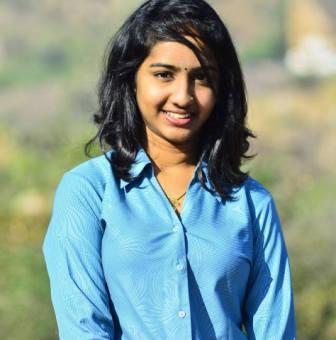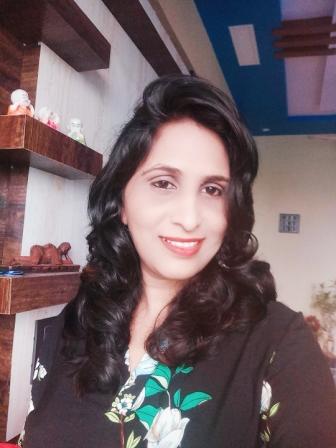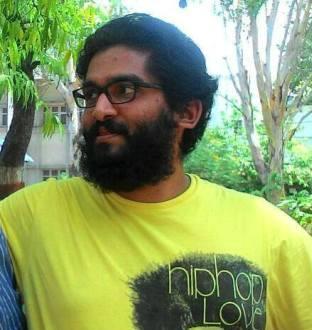Nandhana Prem
 As a girl of 12 years, I came across Kancha Ilaiah’s book “Why I am not a Hindu?” for the first time. Stepping away from the fictions of that time, I took interest in works like “Karukku” by Bama, “Mother Forest” by C. K. Janu and most important politically, “Annihilation of Caste” by Dr. B. R. Ambedkar. Through my exposure to Dalit writings, I came across the Bhima Koregaon battle. I vaguely remember having read or heard about it without paying much attention to it as I saw it as just one event of conflict between the British and Peshwas.
As a girl of 12 years, I came across Kancha Ilaiah’s book “Why I am not a Hindu?” for the first time. Stepping away from the fictions of that time, I took interest in works like “Karukku” by Bama, “Mother Forest” by C. K. Janu and most important politically, “Annihilation of Caste” by Dr. B. R. Ambedkar. Through my exposure to Dalit writings, I came across the Bhima Koregaon battle. I vaguely remember having read or heard about it without paying much attention to it as I saw it as just one event of conflict between the British and Peshwas.
Post the violence that erupted during the commemoration at Bhima Koregaon on the 200th anniversary of the battle, I realized how significant the whole event is in Dalit history. But the pervasion of its significance outside the spatiality of Maharashtra can still be brought under scrutiny. There are lakhs of people even now in Kerala, the place I belong to, who are unaware of Bhima Koregaon and its significance. Even after the violence on 1st January 2018, there were little or no deliberations on the topic. However, it is important to acknowledge the role of platforms such as Kerala Freethinker Forum in conducting talks on Dalit issues and the need for caste-based reservations in society. People like Sunny M Kapicadu played a crucial role in keeping such topics alive. On the other side, the large majority in Kerala still lives under patriarchal Brahminism.
Being part of the academia, I took it up as a challenge to understand more about Bhima Koregaon and in doing so I came across Somnath Waghmare’s documentary, “The Battle of Bhima Koregaon – An Unending Journey”. It helped me understand, how we as a society have been ignorant in talking more about it. Thus, this is my attempt to understand Bhima Koregaon and the alternative narrative that it provides to Dalit politics.
In the context of the violence that broke out in 2018 with regard to Bhima Koregaon, there came several stories narrated from multiple points of view. However, they lack the idea of Dalit life which is rooted through their act of commemoration. Often, Dalits are otherized when events are narrativized by the savarnas. The dominant versions of history voice a homogenized version that ascertains the invisible otherization of Dalits from the realms of speech. Commemoration as an act earns certain bodily authority for the Dalits which is also visible through the means of speech that they build through solidarity.
The Battle of Koregaon for the Dalit was not just a battle between them and the Peshwa faction. It resonated their reclaiming of bodily authority and a sense of dignity. The battle gaining a victorious momentum for the Mahars enabled them to pass on their stories to keep their lives alive within and outside of their community.
The politics of inclusion and exclusion plays a significant role in our society deciding who gets the upper hand and who remains displaced. Inclusivity often works by centering the dominant and privileged castes and class ignoring the very existence of the Dalits by othering them. Inclusivity is not merely restrict to the gated and closed communities, but it is perpetuated even through status symbols, artefacts, memorials, etc. In contrast, the legal-juridical institutions, aiming to bring deprived people as one among the rest in the society through their inclusive programmes, which ensured that Dalits are able to exercise equal rights as their fellow beings.
Nonetheless, the legal-juridical institutions do not incorporate the day to day realities of Dalits. In such a context, rights and protection do not merely help uplift the Dalits, but also their immediate cultural context which is embedded in struggles and stories.
Through commemoration as a cultural means coinciding with the political act, the Dalits are consolidating to move away from the peripheries where they remain either as unheard or silenced. The commemorative event at Bhima Koregaon is, therefore, a narrative that unites the community to ensure that their voice is heard thereby creating an ‘alternative narrative’ against the dominant. The victory pillar commemorating the Koregaon battle becomes a cultural symbol to resist again hegemony, giving a sense of community to Dalits. Hence, the commemorative pillar symbolizes the voice of the unheard.
In attempting to knit a narrative of solidarity, Dalits are underlining the narrative of the displaced, wherein the indigenous marginalized communities combat against the dominant homogeneous narrative. If the dominant uses Vedic scriptures to legitimize their hierarchical position, Dalits, on the other hand, deploy the trope of ‘memory’ central to their narrative, a political term initiating a social action.
In the above elucidation of Dalits reclaiming their position through solidarity, we see the emergence of a history which has always been there for them as oral stories. In the process of these stories moving away from their specific cultural context to that of a political arena, the recognition of Dalits is also being transformed to that of political recognition through a cultural articulation.
If at all Dalits are taken into account, we either talk about them as predators or prey, wherein the former elicits violence in society and the latter is the victim of society. In any case, their voices are unheard. Interestingly, within the whole narrative of Bhima Koregaon, the voice of Dalits comes to the forefront, mediated through the act of commemoration that lends them an identity. Thus, the commemoration of Bhima Koregaon gives a sense of community to Dalits as they deploy their collective memory to overthrow the brahmanical hegemony thereby creating an alternative narrative over the dominant.
In taking tremendous pride in the battle that the victory pillar in Koregaon celebrates, the Dalits see it as an instance when they were successful in overcoming their untouchable status by defeating the savarnas. It unified the Dalit community, creating a space for speech. Commemoration, therefore, acts as a symbol of confrontation against the hegemony that exploits the marginalized. They are trying to create a community by claiming their relics and tombs that hold their past.
Bhima Koregaon is a social and cultural memory which is political in nature and helps to trace their genealogy of the past and consolidate their future to ensure that their voices are heard. Dalits through their act of commemoration rememorize their past. In doing so they are talking back or creating a language of their own against the oppression they have met.
Quoting Ambedkar’s words, “Educate, Agitate, Organise”, we need to make people more aware about this. Commemoration is an act of doing so. The Battle of Bhima Koregaon is not just a proud moment for Dalits in Maharashtra but for the whole community in India. Unfortunately, we lag behind even today in addressing the same across spaces.
~~~
Nandhana Prem is currently pursuing her Masters in English with Cultural Studies from Christ University (Deemed), Bengaluru. She has completed her Bachelor of Arts (BA) Honours in English from the same University. She is from Kerala and has penned a few articles and features for The Times of India, Trivandrum Bureau as part of her internship programme. Being part of the academia, she has done dissertation and research papers in the discipline of Humanities. Apart from her academic interest, she has also worked as an online content writer and online tutor (for students abroad).










